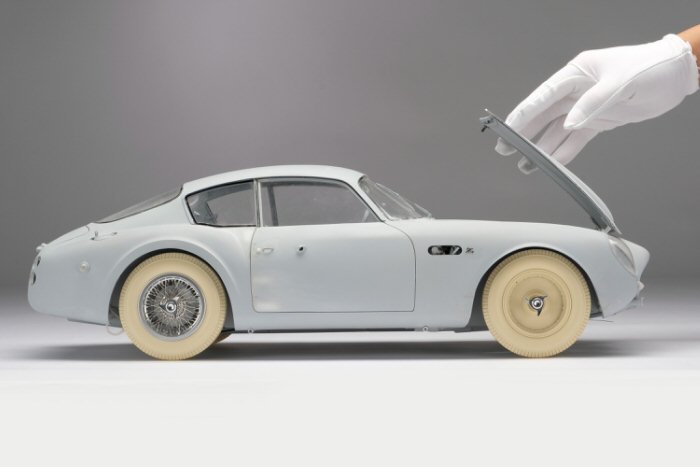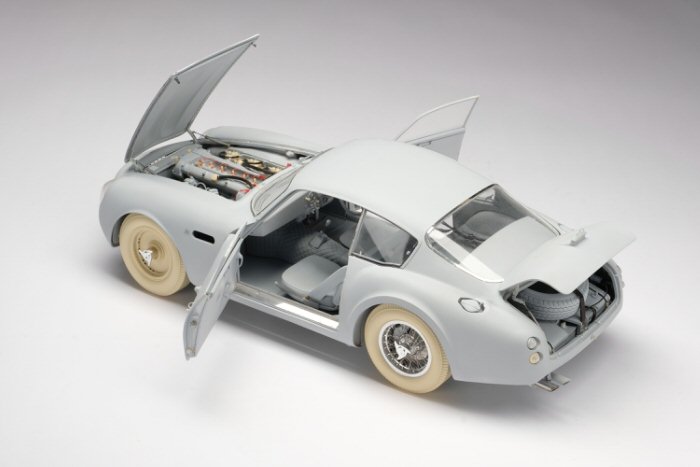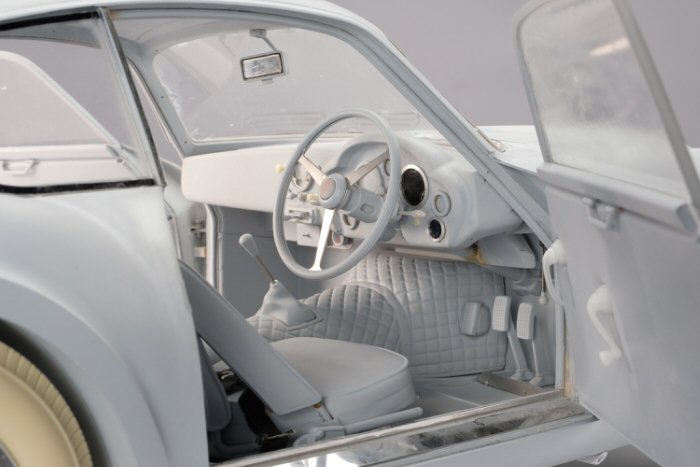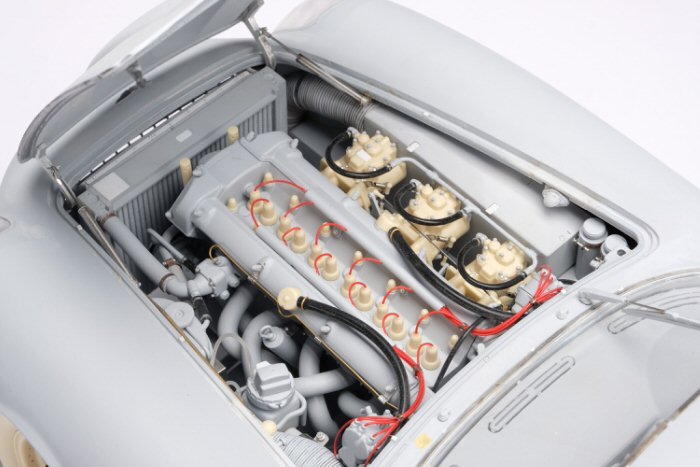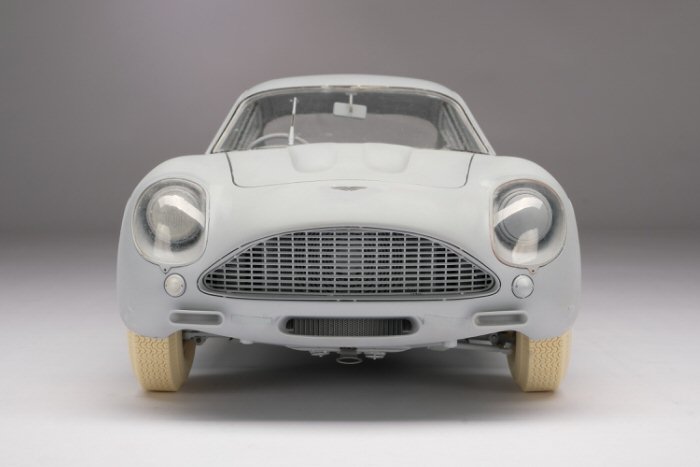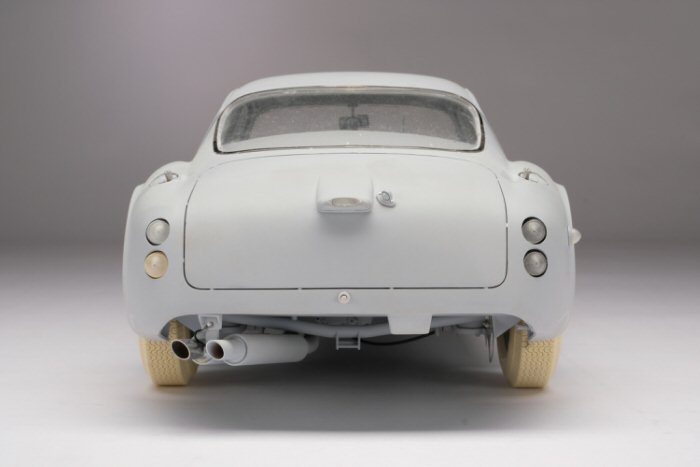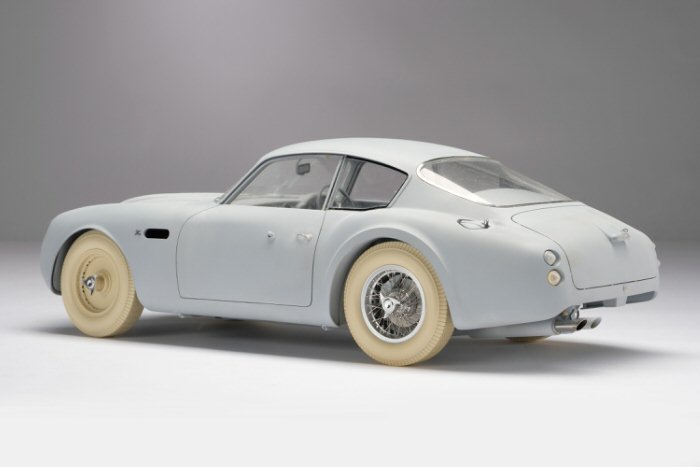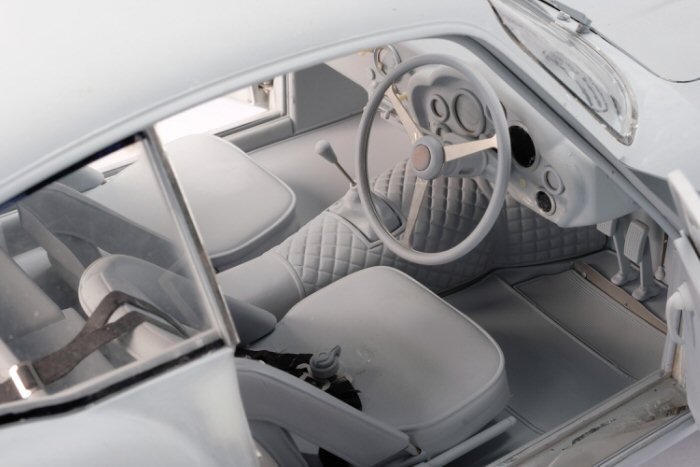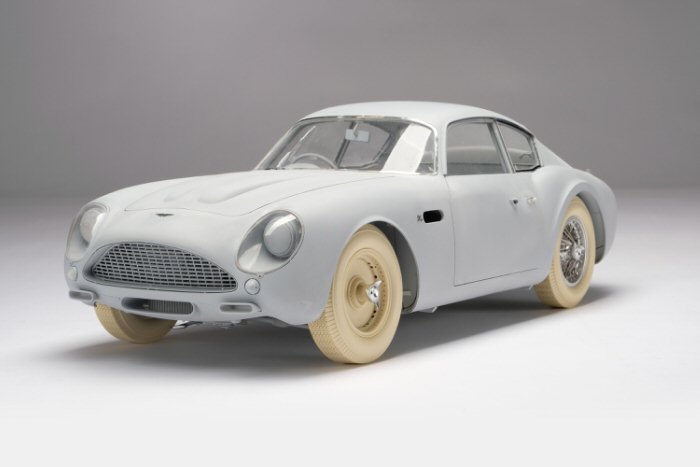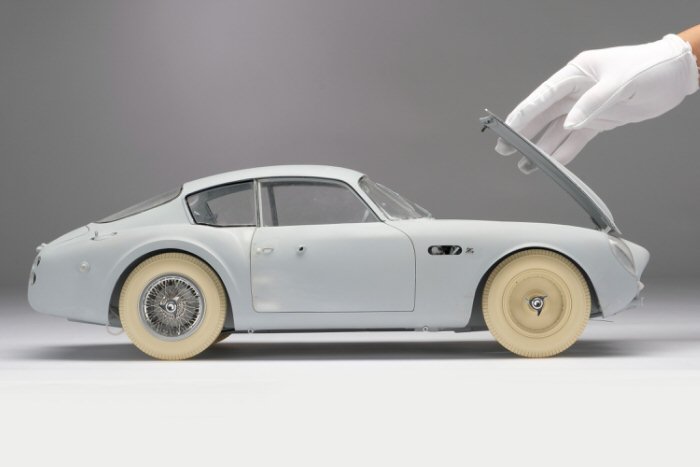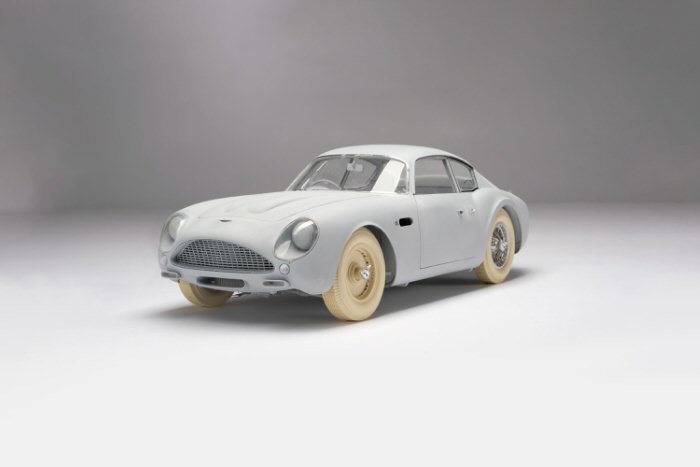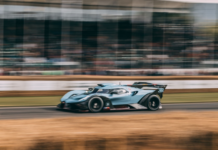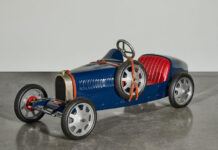Amalgam Collection is delighted to introduce the model of the Aston Martin DB4 GT Zagato ‘1 VEV’, exactly as raced at the 1961 RAC Goodwood Tourist Trophy by Roy Salvadori.
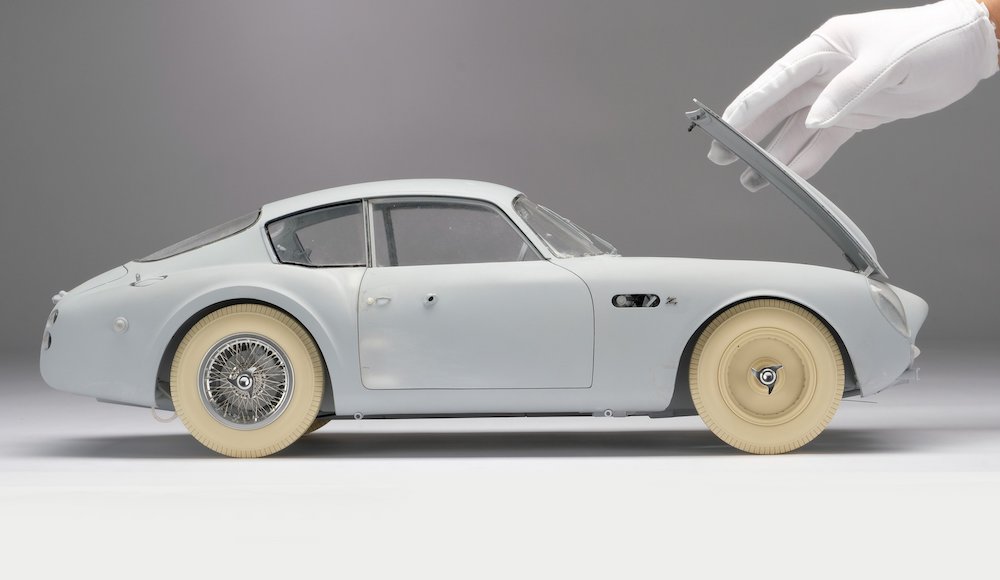
To faithfully recreate 1 VEV, they were honoured to be given access to the original car to capture every detail with a very precise digital scan, and make a photoshoot of around 1000 high resolution images. Primary references have been taken from photographs shot at the 1961 Goodwood TT, with secondary references from other races of the period, and from the car today which was carefully restored to its original specification in 2007.
Aston Martin DB4 Zagato
Considered by many as the most desirable Aston Martin road car of all time, the DB4 GT Zagato is easily one of the most exciting and beautiful sports cars to ever emerge from the UK. It was unveiled at the London Motor Show at Earl’s Court in October 1960, clothed in a stunningly beautiful and lightweight body from the famous Italian coachbuilder Zagato.
As pre-cursors to perhaps the most famous Aston Martin, DB5, DB4GT and DB4GT Zagato played a crucial role in defining some of the iconic design cues still used in by Aston Martin today. Only 19 examples of this car were ever produced, and this rarity is reflected in their high value today: an original could be expected to be achieve over five million pounds at auction.
The DB4 itself was released to universal acclaim in 1958, whilst the GT variant was introduced just a year later, with Aston Martin eager to take it to the track. For this reason, the GT model had distinct modifications which prepared the DB4 for racing endurance. A shortened wheelbase, a much sparser interior and lighter bodywork contributed to its 85kg weight loss over the standard car, whilst the hood concealed a potent version of the 3.7 litre, straight six-cylinder engine that used triple Weber carburetors, twin-spark ignition, high lift camshafts and a 9:1 compression ratio raise power output to 302 bhp.
Furthermore, the model had a dual-plate clutch, close-ratio transmission, Salisbury Power-Lok differential and larger Girling disc brakes. The GT’s maximum speed was 151 mph (243 km/h) and could sprint to 60 mph (97 km/h) in just 6.1 seconds. It was the fastest road legal production car at the time.
With a large factory backing, the DB4 GT was raced extensively with success by many famous drivers of the day. Despite this, Aston Martin felt they could achieve more, having emerged victorious at the 1959 edition of the 24 Hours of Le Mans with the purpose built DBR1. Enter Milan-based coachbuilder Zagato. Styling of the car was enlisted to Ercole Spada who was a newcomer to the Zagato firm and only 23 years old.
In less than a week, Spada had transformed the DB4 GT, combining the essence of the Aston Martin’s shape with Zagato’s free flowing lines into a smaller, even more lightweight car. Many steel components were replaced by aluminium counterparts. Nearly every non-essential element disappeared such as the bumpers. With the help of Perspex and aluminium components, a further 45kgs were shed from the GT’s weight. The front incorporated the curved profile of Aston’s signature grill and the front was low enough to warrant twin bulges on the hood for valve cover clearance. In the trunk was a huge fuel tank and spare tire which left room for little else.
The Zagato did race, earning a podium on its first competitive appearance in the hands of Stirling Moss. Three Zagatos competed at Le Mans in 1961, including the most well-known 1 VEV and 2 VEV of John Ogier’s Essex Racing Stable. A repeat of the 1959 Le Mans victory was not to be, with all three cars retiring. Success would follow for the first time just a month later at Aintree in a British Grand Prix Support race, as Lex Davison, behind the wheel of 2 VEV, took a last lap lead from a Jaguar E-Type. Further success followed at several British circuits such as Silverstone, Oulton Park and Brands Hatch.
This fine 1:8 scale model of the Aston Martin DB4 GT Zagato replicates chassis DB4GT/1082/R, more commonly known as ‘1 VEV’, exactly as raced at the 1961 RAC Goodwood Tourist Trophy in the hands of Roy Salvadori for John Ogier’s Essex Race Stable. Arguably one of the car’s finest moments, Salvadori qualified third fastest after practice with a time of 1 minute 36.6 seconds, ahead of his teammates Jim Clark and Innes Ireland, but behind Stirling Moss and Mike Parkes in their Ferrari 250 GT SWBs.
A slightly slower start dropped 1 VEV to fourth behind Clark at the end of the first lap, though Salvadori regained this place soon after as the trunk of Clark’s Aston had opened itself and had to pull into the pits to fix the issue. Around halfway through the race, Parkes was black-flagged when part of his undertray began to drag on the road after an off-course excursion behind the bushes at Woodcote, allowing Salvadori and 1 VEV up into second place.
This was not to last, as Parkes made a tactical surprise on his fourth and final pit stop, managing to undercut both Salvadori and Ireland to regain second place. Although Salvadori tried hard in the last 15 minutes to pull back the seven second deficit, the heavier Aston Martin just did not have the steam to make up any ground and he brought the car home to claim the final podium position.
1 VEV was originally built and raced together with sister car ‘2 VEV’ (DB4GT/0183/R) by John Ogier’s Essex Race Stable. Both cars were lightweight track focused versions of the Zagato derivative. 1 VEV was originally purchased and raced in the ‘green’ shade of Aqua Verde Caliente “1 VEV” and appears to have been sold by Ogier around early 1968, by which time it appears to have undergone at least 3 colour changes – ‘white’ around April 1965, ‘maroon’ around April 1966 and ironically ‘Ferrari red’ in October 1967.
The car remained with Mr. Gregory up to 1990, in which it appeared to have undergone several bodywork changes to trim and arches, as well as minor interior modifications such as a radio, before being restored around 1990 and bought at auction. Despite these changes, given the lengths of ownerships and that the car had no major accidents, it remained very original. In 2007, under the watchful guidance of 1 VEV’s owner, the car was faithfully and extensively restored again, this time as accurately as possible, ensuring it’s return original 1961 specification.
This model has been handcrafted and finished in our workshops with the co-operation and assistance of Aston Martin regarding original finishes, materials, archive imagery and drawings. The use of original CAD and supremely accurate digital scanning of the original car has allowed us to perfectly recreate every detail at scale. Furthermore, the prototype model has undergone detailed scrutiny by the manufacturer’s engineering and design teams to ensure complete accuracy of representation.
Click here for further information
more information: amalgamcollection.com



